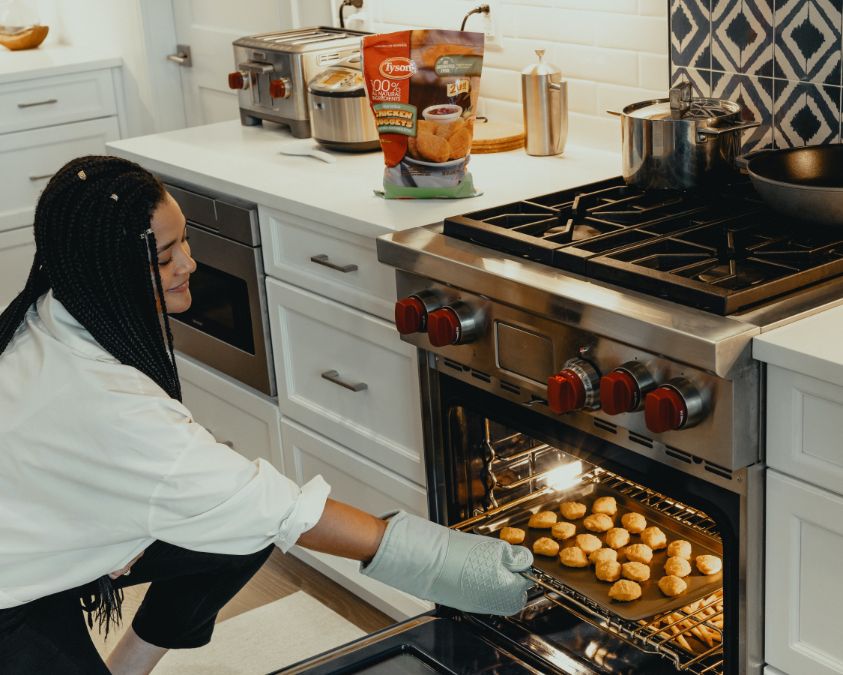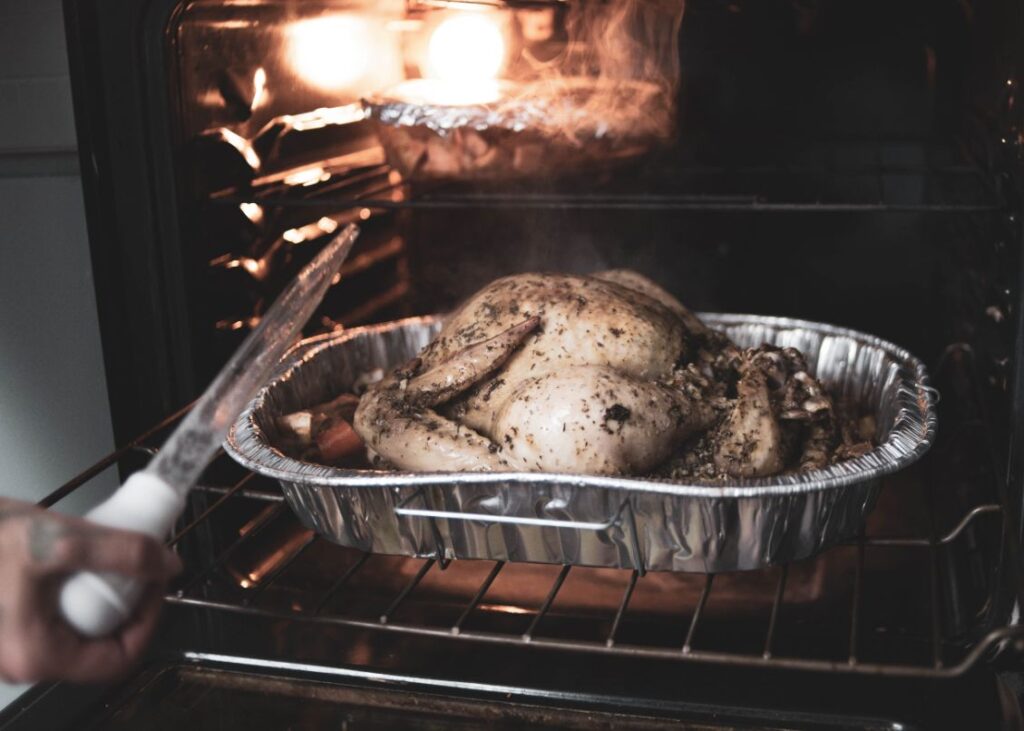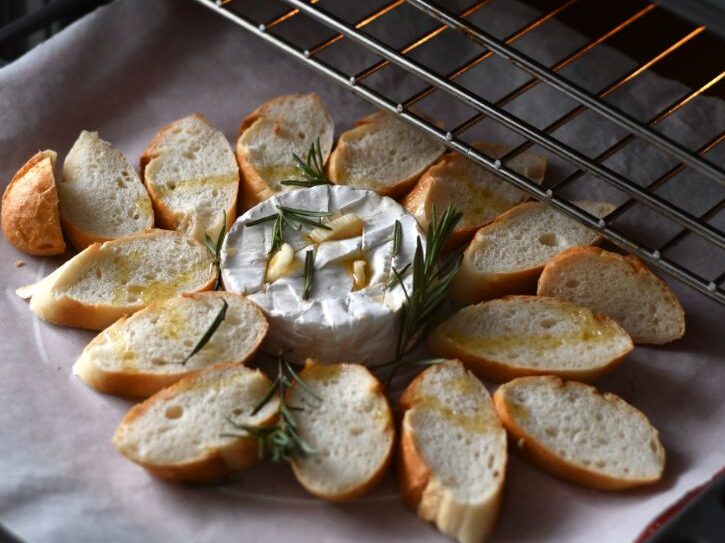
Learn when and how to use a convection oven instead of a standard oven so you can cook with confidence.
Ovens are ubiquitous in kitchens, but convection ovens are less frequently used. The convection setting on your home oven may even exist, but you might not know how to use it. Convection oven cooking is easier than it might seem, and it can improve a variety of dishes.
In addition to the two heating elements required for conventional ovens, convection ovens also have built-in fans. When baking or cooking, a convection oven distributes heat more evenly.
Read and find out what a convection oven really is, when to use it, when not to use it, and more.
What is a Convection Oven?
Simply put, a convection oven is different from a regular oven in that it has an exhaust fan and system. Hot oven air is blown over and around the food by the fan and exhaust before being vented back outside. This hot air surrounds the food as a result, cooking it more quickly and evenly.
A great way to describe this comes from Fine Cooking: “Consider wind chill to better understand this: When cold air blows against you on a windy winter day, you feel colder more quickly than you would on a day with no wind and the same temperature.”
The same holds true for cooking with heat and convection! The fan and exhaust start running as soon as you turn on the setting.
How Does a Convection Oven Work?
In order to help food cook more quickly and uniformly, convection ovens circulate hot air around the oven’s cavity. An exhaust system and fan that circulates hot air around the food enable it to accomplish this.

Due to less moisture buildup, this not only promotes more even cooking of the food but also results in a crispy end product (much like an air fryer).
Conventional ovens frequently have a convection oven setting that, when selected, turns on the fan and exhaust system. Even toaster ovens with convection ovens built-in are now available.
How Does a Convection Oven Work?
Food cooks more quickly and uniformly in a convection oven by moving hot air around the oven’s cavity. An exhaust system and fan that circulates hot air around the food enable it to accomplish this. Due to less moisture buildup, this not only promotes more even cooking of the food but also results in a crispy end product (much like an air fryer).
Conventional ovens frequently have a convection setting that, when selected, turns on the fan and exhaust system. Even toaster ovens with built-in convection ovens are now available.
When to Use the Convection Setting?
- Any time you’re roasting: Convection cooking is especially beneficial for roasting foods like meats and vegetables. They cook more quickly and uniformly, and the dryer conditions produce much crispier skin and better-caramelized exteriors.
- When baking pies and pastries: Pie dough and other baked goods, such as croissants, rise more when heated by convection because it quickly melts fat and produces steam.
- When making lots of cookies: With convection, you can bake multiple trays of cookies at once in an even manner without rotating them halfway through.
- Any time you’re making something that’s cooked with a cover: Moisture loss is not an issue if the food is covered with a lid, as in a braise, or if a casserole dish is covered with foil, so you might as well cook on convection since it will cook more quickly.
- When you’re toasting or dehydrating: Convection is more effective than regular convection because it removes moisture from food more quickly when you toast or dehydrate it.
When Not to Use the Convection Setting?

In the case of delicate foods that begin as batter and set during cooking, the fan becomes a safety risk. These foods can produce lopsided results when you blow air on them. Don’t use convection when making these foods:
- Custards and flans
- Souffles
- Cakes
- Quickbreads
- Bread: Convection is said by some to produce uniform browning and a great crust, while it is claimed by others that it dries out the bread’s interior. You really have a choice to make in this situation.
How to Use the Convection Setting?
If you’ve decided to use the convection setting, here are a few things to keep in mind:
- Lower the temperature: Reduce the suggested oven temperature by 25°F.
- Check earlier: On a convection oven, food cooks more quickly, so check on it halfway through the suggested cooking time and make any necessary adjustments.
- Make sure air can circulate: Air must be able to move freely over the food for convection to be effective. Avoid covering the oven shelves with foil and instead use trays, roasting pans, and baking pans with lower sides.
Don’t be afraid of your convection oven; take advantage of this wonderful feature! You’ll probably be amazed by the results if you fiddle with it.
Why Should You Use the Convection Setting?
- It cooks faster: Food cooks approximately 25% faster in a convection oven because hot air is blowing directly onto it rather than just surrounding it.
- It cooks more evenly: A regular oven may have hot spots depending on where the heating element is located, but a convection oven’s fan will move the air to help balance out temperature variations.
- It’s better at browning: Due to the moisture’s inability to escape, the air in a typical oven can become slightly humid. Convection produces a dry environment that accelerates the caramelization of sugars during roasting, resulting in a browned exterior but a moist interior for foods like meats and vegetables.
- It saves energy: Convection ovens use less energy than conventional ovens because food cooks more quickly and usually at a lower temperature.

How to Care for a Convection Oven?
A convection oven needs to be cleaned just like a regular oven. However, according to Niles, it’s crucial to remove any grease from a convection oven right away. “Don’t let it build up, because that grease could get into your fan,” he says. Grease accumulation makes cleaning an oven more challenging and ultimately reduces the oven’s lifespan.
If a convection oven has the option, you can use it to clean it. Otherwise, Niles advises staying away from chemical cleaning solutions and switching to a solution made of water, vinegar, and baking soda. Use a sponge to clean the oven, and then a damp cloth for a second rinse.
Convection Oven Vs. Conventional Oven
Two heating elements are used in a conventional oven to heat the air and cook food. One can be found at the bottom and is used for the majority of baking and cooking. The other, which is mostly used for broiling, is on top.
Because a conventional doesn’t circulate the air like a convection oven, you might have “hot spots” or pockets of air that are hotter than others. Recipes frequently instruct you to rotate the baking pan to ensure even cooking because this can cause uneven cooking.
Convection Oven Vs. Air Fryer
Simple countertop convection oven in miniature—that’s what an air fryer is. That’s right, air fryers don’t actually fry foods at all. They function similarly to convection ovens, circulating hot air around the food to cook it from the inside out and create a crispy exterior.
There are some benefits to using the internet’s preferred countertop appliance, so think twice before you throw it away. Because air fryers are so small, the food cooks in a smaller area and heats up more quickly. This indicates that using an air fryer will result in faster food preparation than using a conventional convection oven.
You might need to cook large quantities in batches because it can hold less food as a result. If you think the trade-off is worthwhile, we’ll let you make that judgment. When cooking for a small family, a convection oven is preferable to an air fryer.
Conclusion: Buying a Convection Oven
Today, a convection oven setting is available on a lot of ovens. With the help of a fan, the convection oven can bake or cook more evenly while increasing airflow.
Instead of cakes, convection ovens are great for baking baked goods like cookies, pastries, and pies. They can also be used to cook a variety of savory foods like roasted chicken, vegetables, casseroles, and other covered dishes.
The fan in a convection oven can’t be used with everything. Convection is not recommended for delicate baked goods such as souffles, custards, angel food cakes, and even many quick slices of bread.
Cakes may rise unevenly as a result of the airflow, cupcake tops may lean to one side, and the custard may develop an undesirable crust as a result of the top becoming dry.
